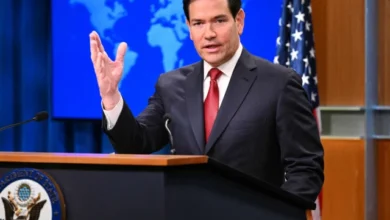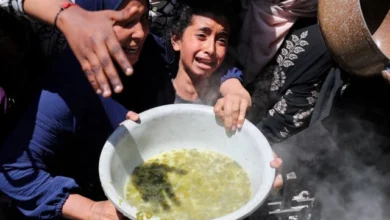Electric shock for millions as tariffs soar

ISLAMABAD:
In yet another shock to the tax-bitten masses, the government on Wednesday approved up to 51% or Rs7.12 increase in the per-unit price of electricity from July, the highest raise in terms of percentage for the lower income groups.
In one go, 32.5 million consumers, mainly households, will be forced to pay an additional amount of at least Rs580 billion in this fiscal year. The rate is over and above the existing cost of electricity, which the consumers will pay, mainly due to mismanagement and wrong energy policies of past three decades.
Among these 32.5 million electricity consumers, 26 million households fall in the category of the poorest to low-middle income groups – the segments that have seen the maximum increase in prices in terms of percentage.
For the first time, the government has also slapped the residential electricity consumers with fixed monthly charges ranging from Rs200 to Rs1,000 per unit. The power tariff increase was one of the key prior actions the International Monetary Fund (IMF) has set for Pakistan to qualify for the staff-level agreement for the next bailout package.
The federal cabinet approved the summary for the increase in the electricity prices through circulation, a top government official confirmed to The Express Tribune. He said that a notification for the increase in the price would be issued shortly.
Unlike the past, when the summary would first go to the Economic Coordination Committee (ECC) of the Cabinet, this time the energy ministry quietly moved the summary to the federal cabinet and sought its approval through circulation.
The circulation is a method that is different from an open discussion during a regular cabinet meeting. About 32.6 million consumers have been hit without debating the issue in the federal cabinet.
The Power Division had earlier moved a similar summary on June 14 but due to objections raised by the IMF on the new industrial package, it had to withdraw the summary. Also, the IMF did not accept the prime minister’s Rs200 billion package under which the industrial electricity price had been announced at Rs34.99 per unit. Now, the new electricity prices for the industry are Rs37.83 per unit.
The government increased the electricity prices in the range of Rs3.95 to Rs7.12 per unit for the residential consumers. In terms of percentage, the increase ranges from 14.3% to 51% – the maximum increase for Pakistan’s poorest users, having 1 to 100 units monthly consumption.
The average increase in the electricity prices is Rs4.55 per unit and as a result, the national average uniform rate has jumped from Rs28.44 per unit to Rs33 per unit, according to the Power Division.
However, the minimum rate will now be Rs11.69 per unit and the maximum will be Rs48.84 per unit, excluding taxes, quarterly and monthly adjustments.
The government of Prime Minister Shehbaz Sharif approved the increase in the electricity prices for 1 to 100 units protected consumers from Rs7.74 per unit to Rs11.69 –an increase of Rs3.95 or 51%. This is the poorest class that had been hit the hardest.
But the Power Division official said that the protected consumers did not see any increase during the past three years. The traders have already started protesting against the massive increase in their monthly bills. The people were given another shock after heavy taxation of a record Rs1.7 trillion.
On the consumption of up to 200 units, the new price for the so-called protected consumers is Rs14.16 per unit –an increase of 41%. If a consumer does not fall in the category of protected and he has monthly consumption of up to just 100 units, he will have to pay Rs23.59 per unit, excluding taxes, which translates into an increase of Rs7.12 per unit or 43.2%.
For up to 200 unprotected consumers, the new rate is Rs30.1 per unit – a surge of Rs7.12 or 31% for the category of poor people. Likewise, for up to 300 units consumption, the new rate is Rs34.26 per unit – an increase of Rs7.12 or 26.2%. For up to 400 units, the new rate is Rs39.15 per unit with the increase of 22.2% or Rs7.12 per unit.
For up to 500 units, the new rate is Rs41.36 per unit and the increase is Rs6.12 per unit or 17.3%. For up to 600 units, the new rate is Rs42.78 per unit and the increase is Rs6.12 per unit. For up to 700 units, the new rate is Rs43.92 per unit and the increase is Rs6.12. For the highest category, the new rate is Rs48.84 per unit.
For the commercial users, the new rate is in the range of Rs38.59 to Rs45 per unit, showing an increase of up to Rs5.84 per unit or 15%. Also, the government has now revised the fixed charges for the industrial consumers.
The National Electric Power Regulatory Authority (Nepra) had proposed the fixed charges from Rs200 to Rs500 per kilowatt per hour to Rs500-2,000. But the federal government approved the fixed charges in the range of Rs400 to Rs1,250 per kilowatt per hour per month.
Also, as against the earlier decision of applying fixed charges at half of the sanctioned load, the cabinet approved that the application of fixed charges would be at 25% of sanctioned load.
The government approved the new industrial tariff at Rs37.83 per unit, which is same as the last year but Rs2.84 per unit higher than what the prime minister had announced. The prime minister’s words were shot down by the IMF’s Mission Chief Nathan Porter.
Source link



